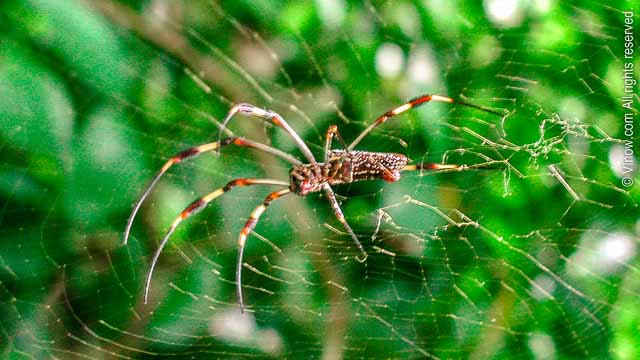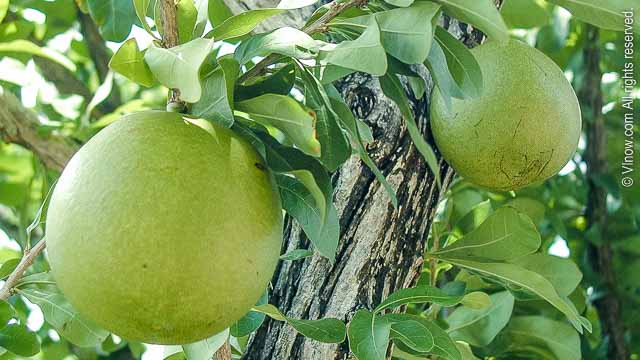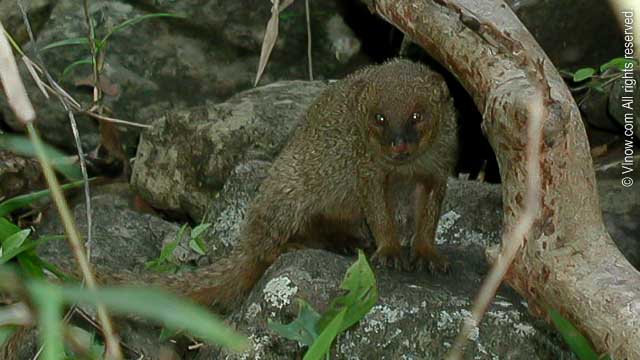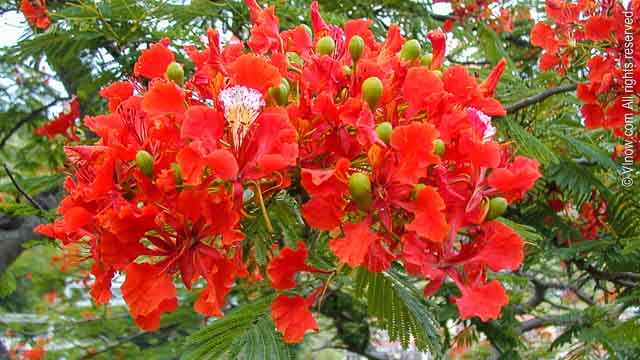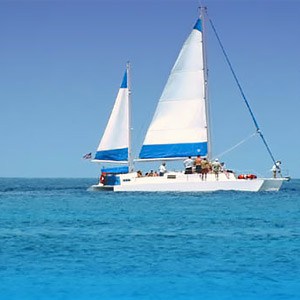Visitors to the U.S. Virgin Islands sometimes ask what insects, arachnids, bugs and creepy crawlies they might come across while on vacation. Mosquitoes are the most commonly asked about and the one most likely to be encountered, however there are many others living in the islands. Just how many? Well I recently had house guests and they spotted and asked about ants, spiders, mosquitoes, ‘gongolos’, termites, ‘red bugs’, no-see-ums, wasp, dragonflies, butterflies, moths, tarantulas, bees and more!
Now before you get stuck on say – tarantulas; my house guests included children and we were actively looking for creepy crawlies in the yard. In general a visitor likely would not come across one of these hairy ground spiders while sitting on the beach sipping a cold drink. So which ones might you come across while visiting; let’s take a look at the Top 10.
1. Orb Weaver Spider: The Artful Web Weaver of the U.S. Virgin Islands
A variety of spiders live in the U.S. Virgin Islands. They are found in homes, outdoors, in spider webs and underground. One common spider you might see while hiking along trails is the Orb Weaver Spider. It constructs a large beautiful web and feeds on insects and other spiders that get entrapped in the web.
2. Ant Species in the U.S. Virgin Islands
There are over 30 species of ants in the U.S. Virgin Islands. They vary in size and habitat. Some eat plants while others are scavengers; some bite or sting and some do not. The ant species residents and visitors see most often are small sugar or house ants. Leaving food or a drink out for 20-30 minutes, sometimes less, can result in these ants descending on your meal. They are pretty harmless though annoying if they are covering that tasty sandwich you left out for a little bit.
3. Butterflies in the Islands
Several butterfly species live in the islands including the Monarch which has beautiful reddish brown wings outlined with black. The Gulf Fritillary is orange-red in color with black spots. The Zebra is black with bold yellow stripes. There are also several white butterflies. Butterflies are usually found flying around forested areas, sometimes along hiking trails.
4. Meet the Gongolo: The U.S. Virgin Islands’ Distinct Millipedes
There are a few types of millipedes in the U.S. Virgin Islands; the one most often spotted however is locally called a gongolo. You might see these while hiking around the islands. They are found on trees and near damp soil. They grow up to 3.5 inches and feed on plant material. When disturbed they secrete a fluid that stains the skin, has an unpleasant smell and that is distasteful to predators.
5. Centipedes in the U.S. Virgin Islands
Centipedes are among some of the most feared critters on St. Croix. They are more common on the big island than they are on the other islands. The issue is that they bite, and it’s painful. The bite doesn’t usually cause a serious reaction unless you are allergic.
Centipedes VS. Millipedes
Some people get centipedes mixed up with the earlier mentioned millipedes, but they are very different. Centipedes mostly eat insects which they catch using venom. Millipedes mostly eat decomposing plants. Millipedes are easy to spot, move very slowly, curl up when accidentally touched, and are pretty harmless. Centipedes have quicker movements and again the painful bite. Using their looks to tell them apart, centipedes have a flatter body and millipedes are more rounded.
6. Scorpions
These critters are rarely seen in the USVI because they are most active at night, but they are around. Scorpions have a stinger on their tail and while there is a great fear in the islands about them, for most scorpion species the sting is said to be like a bee sting. So its unpleasant and possibly an issue if you are allergic. Scorpions generally live and hide in holes and crevices.
7. Mosquitoes in the U.S. Virgin Islands: The Price of Paradise
Mosquitoes are a common insect with several thousand species found throughout the world. Mosquitoes are always around in the U.S. Virgin Islands but their numbers increase after extended rainfall. Adult females lay their eggs in water. Rainfall creates puddles, stagnant pools and collects in buckets and planters left around the homes; these all can become breathing grounds for mosquitoes. If you are visiting during a rainier month or after a rainy spell, use some insect repellent and you should be OK.
8. Pyrrhocorid Bug (Red Bugs)
When heading to the beach you may see these brightly colored bugs walking around close to the tree line and within fallen leaves. Often visitors inquire as to whether they are red ants due to their color. Pyrrhocorid Bugs however are not ants; they are a type of plant-feeding insect found mostly in the tropics and subtopics. They have an oval shape and a bright red and black color – same coloration as Spiderman! The bugs are small, ranging from .3 to .7 inch. They are often called Red Bugs.
9. Tiny Biters: The No-See-Ums of the U.S. Virgin Islands
No-see-ums are tiny biting flies that live near water. They are common on beaches in the U.S. Virgin Islands where at least two species are known. They tend to come out in the early morning, early evening and when it’s very overcast and rainy. One species is typically found among the trees and fallen leaves, and the other nearer to shore under seaweed and among rocks. Their bites are similar to mosquito bites, and typically they head for the lower legs. They are also called sand or beach flies/fleas.
10. Termites
While hiking or even driving around the islands you might spot large, round, brown nests in trees – these are the nests of tree-dwelling termites. The termites feed on wood and build their large nests from wood pulp. The worker and solider termites build tunnels from their nest out into their environment. These tunnels offer the termites protection from the sun as they seek out food. Usually in the fall, after a heavy rainfall, reproductive termites will fly away from their nest seeking out a partner and forming a new nest. The reproductive termites grow wings for this nuptial swarm and they shed the wings the same evening. Residents often find dozens of wings littering window sills and balconies the morning after as the termites are attracted to lights around homes.
The ecological importance of these insects and arachnids
When visitors ask about insects and creepy crawlies in the U.S. Virgin Islands they usually do so in an effort to avoid them. These multi-legged friends however are important as pollinators and as food sources for birds, bats and reptiles. They help break down fallen wood, control other insect pests and they can provide entertainment for visitors that are enthusiastic bug watchers!

